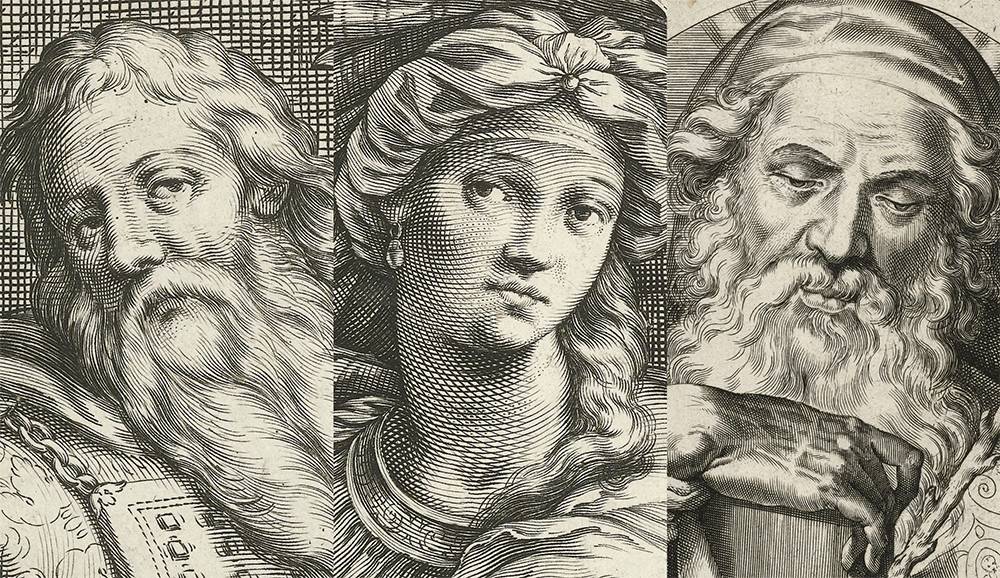This article is part of a series on Old Testament Christophanies. For important background information, see An Introduction to Old Testament Christophanies–with Justin Martyr.

At the opening of Numbers 12, we read that Miriam and Aaron spoke against their brother Moses because he had married a Cushite woman.[1] The Lord heard the siblings question if He had only spoken though Moses, and not through them as well. A parenthetical note then states that Moses was humbler than any man on earth. At this point, the Lord suddenly commanded Moses, Aaron, and Miriam to come out of the Tent of Meeting (vv. 1–4). Then the Lord descended, to make it clear who was in charge:
Then the LORD came down in a pillar of cloud and stood at the doorway of the tent, and He called Aaron and Miriam. When they had both come forward, He said,
“Hear now My words:
If there is a prophet among you,
I, the LORD, shall make Myself known to him in a vision.
I shall speak with him in a dream.
“Not so, with My servant Moses,
He is faithful in all My household;
With him I speak mouth to mouth,
Even openly, and not in dark sayings,
And he beholds the form of the LORD.
Why then were you not afraid
To speak against My servant, against Moses?” (Num 12:5–8).
One Targum on verse 6 replaces “I, the LORD, shall make Myself known” with “the Word of the Lord hath been revealed.”[2] The Targum’s wording is fitting, since it is the Word who makes God known. If the Word of the Lord revealed Himself to any of the other prophets among the Israelites in the wilderness, including to Aaron and Miriam, it would have been in a vision or a dream. However, Moses’ faithfulness in the Lord’s house granted him a special place of privilege. The Word visited Moses to speak with him in person. Moses beheld the form of Yahweh—His physical shape, manifested on earth. The elders of Israel had seen Him as well, though not in the same intimate detail (Exod 24). The Word’s physical form surely pointed to His future human body and may have even resembled it as a special revelation to Moses of the coming incarnation.
Gill commented that Moses beheld the form of the Lord,
as he had at the burning bush, and at Mount Sinai, with the elders of Israel, and when the Lord proclaimed his name before him; at which several times it is highly probable he beheld the Lord, even the Lord Christ, in an human form, as a presage of his future incarnation . . .[3]
Before the Incarnation, only a select few beheld the form of Yahweh. After the Incarnation, many beheld the form of Yahweh in the person of Jesus Christ.
Moses being faithful in all the Lord’s household (v. 7) is referred to in Hebrews 3:1–6. There, Jesus is said to be faithful to God, who appointed Him, as Moses was in all God’s house. The builder of the house has more honor than the house itself, meaning that Jesus is worthy of more glory than Moses. Moses was faithful as a servant in God’s house (the house of Israel), while Jesus was faithful as a Son over His house (believers in Christ). The comparison confirms Moses as an eminent type of Christ. This means that in Numbers 12, the Son of God came down to praise a man who pointed to His future work as Jesus Christ.
The anger of the Lord burned against Miriam and Aaron. Once the Lord and the cloud departed, Miriam had become white with leprosy. Aaron begged Moses to forgive him and Miriam. Moses cried out to the Lord, asking Him to heal her. The Lord answered that after Miriam had been shut outside the camp for seven days she may be received again. After her brief exile, a healed Miriam returned to the camp (Num 12:9–15). The Lord’s departure made room for the effects of this fallen world to immediately take hold. One may wonder why Aaron remained unpunished. Yet he was punished by having to witness his sister’s physical distress and by having her removed from the camp. It is also likely the case that Miriam was the primary instigator in their sin and that Aaron only joined her out of weakness. (Though a woman, Miriam’s name is mentioned before Aaron’s in Numbers 12:1, hinting that she was the principal figure in opposing Moses.) Thankfully, the Son is both just and merciful. Miriam and Aaron’s punishment may serve as a warning for followers of Jesus today.
[1] Who may or may not have been Zipporah. Since Miriam and Aaron’s complaint seemed to point to a recent event, this would suggest that Moses had taken another wife (in this case, likely after Zipporah had died). Several translations refer to her as an “Ethiopian” woman because Cush is elsewhere used to refer to Ethiopia (e.g., Isa 20:3; Nah 3:9). This leads one to conclude that this wife was from northeast Africa. However, Cushite here may refer to someone from Cushan. Cushan and Midian (where Zipporah was from) were both located in the same area of northern Arabia. The tents of Cushan are coupled with the tent curtains of Midian in Habakkuk 3:7.
[2] Targum Pseudo-Jonathan on Numbers 12:6.
[3] Gill, Exposition, Num 12:8.

Josephus, Antiquities 10, referenced by Irenaeus, notes that Moses married a Cushite woman named Tharbis. Josephus says Moses had two children by Tharbis. Interestingly the story is strikingly similar to that of Jasher 72-73. Jasher, explains how Moses came to possess the Cushite queen’s hand in marriage through the death of the conquering general Kikianus. Her name according to Jasher, was Adoniah. Ja. 73 explains that Moses for fear of God, would not dare transgress the patriarchal command to Jacob not to marry a Canaanite woman or even a Hamite. Thus he did not consulate the marriage. Since no other children of Moses are mentioned in Scripture, and due to the fact that present archeological finds match several specific defense features in Meroe desired in detail in Jasher it may be the more accurate resource.
Should read “described” not “desired” in the last line of my response.
I thought Josephus had Tharbis marrying Moses before Zipporah. It could still work though. Do you happen to have the Irenaeus reference (that one would especially interest me)? I certainly appreciate the outside sources. I am however, compelled to only assert those things in Scripture with Scripture itself. Otherwise, I like to play it safe.